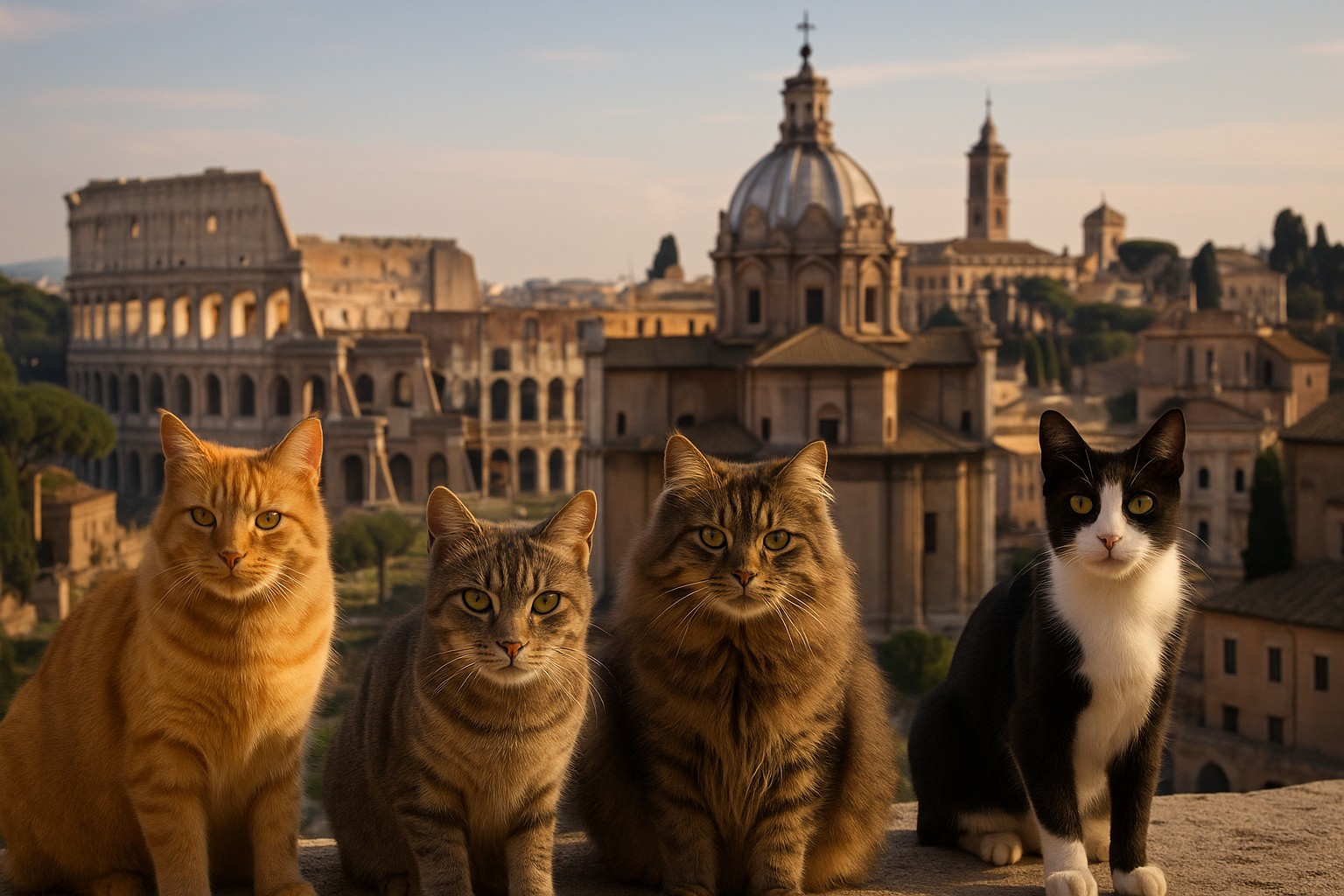
Tucked between the crumbling columns and moss-covered stones of ancient ruins, the city of Rome harbors a quiet legacy — one that walks on soft paws, watches with golden eyes, and carries the wisdom of centuries in its silence. These are the cats of Rome. Not strays. Not pets. But sentinels of time, protected by law, culture, and compassion.
Rome is home to several well-known cat sanctuaries, where felines live freely among temples, ruins, and piazzas. These sanctuaries are more than places of shelter — they are symbols of coexistence, resilience, and the enduring connection between animals and human civilization.
🏛 Torre Argentina: The Most Famous Sanctuary

Perhaps the most iconic feline refuge in Rome is the Largo di Torre Argentina, an ancient archaeological site where Julius Caesar was said to have met his end. Today, it is better known as the place where over a hundred cats lounge among the ruins, sunning themselves on stone platforms once reserved for emperors and gods.
Volunteers at the Torre Argentina Cat Sanctuary care for these cats — feeding, sterilizing, and offering medical attention to ensure the population remains healthy and safe. The sanctuary itself is nestled discreetly in a corner of the site, open to visitors who wish to learn, donate, or simply observe.
Cats here are not confined. They come and go as they please, often returning to the ruins they call home. Many are adopted. Some stay for life. All are treated with dignity and love.
🐾 A Tradition Rooted in Antiquity
The relationship between Romans and cats is not new. Ancient Rome regarded cats with a mix of reverence and practicality. They were protectors of grain, sacred animals in some households, and quiet companions in temples and villas.
Even during the Middle Ages, when superstitions spread fear of felines across Europe, Rome remained a place of relative tolerance. Cats continued to roam the streets and ruins, guarding food supplies from rats and keeping watch beneath moonlit arches.
In a city where history is layered stone upon stone, the presence of cats is a living reminder that not all guardians wear armor — some simply listen, purr, and stay.
⚖️ Protected by Law, Supported by Community
Italy passed a law in 1991 (Law No. 281/1991) recognizing the right of stray cats to live freely where they were born, as long as they are cared for. This means that Roman cats, especially those in sanctuaries like Torre Argentina, are not only accepted — they are legally protected.
Volunteers, many of whom are lifelong animal lovers or trained caretakers, carry out trap-neuter-return (TNR) programs to prevent overpopulation. They also care for elderly or injured cats that may not survive on the streets. Food, shelter, and gentle companionship are provided daily, not out of obligation, but from a shared respect for these animals and the city they inhabit.
🌿 Harmony in a Human World
The cat sanctuaries of Rome are a quiet lesson in coexistence. In a world where animals are often pushed out or forgotten, Rome has created a space — both legally and culturally — where wild and domestic life can overlap with dignity.
Visitors to these sanctuaries are reminded that not all monuments are made of marble. Some are made of whiskers and curled tails. Some monuments breathe.
🧭 If You Visit
If you’re traveling to Rome and wish to experience this unique harmony yourself:
- Visit Largo di Torre Argentina — admission is free, though donations help sustain the sanctuary.
- Speak softly, walk slowly, and observe. You are a guest in their home.
- Consider supporting the sanctuary through adoption, donation, or spreading awareness.
Because in Rome, even the smallest lives are part of something eternal.


